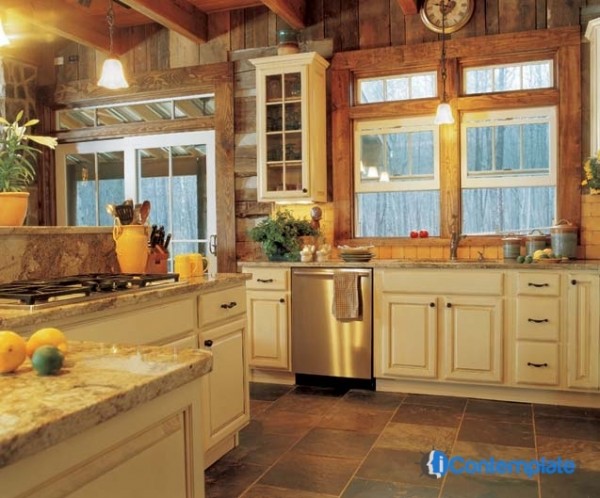<p>Yes, we should be particularly worried about bugs, termite, fungus and mold if we have a log home. These organic nuisances simply feed on logs that build our cabins or homes. Wood is essentially parts of a dead tree and when it alive, tree is a habitat to all kinds of animals and smaller plants. Bugs sleep, eat and reproduce in the cracks and cavities of the tree. With the right moisture, fungus and mold can also grow on a living tree. Although the tree has died, wood is still a mass of organic matter where other organisms can thrive.<br />
Any dead living thing will decompose. Mold and fungus are part of the natural process that causes wood to decompose. Insects also do their part by creating holes inside the tree that make the decomposition process to proceed faster. Without proper treatment, wood will eventually turn into wood dust, which is an ideal food source for new trees.<br />
Owners of log houses need to break the natural cycle to preserve their dwellings. For this reason, it is important to choose only reasonably dry wood for the construction of the log house, because dampness can make mold and fungus to grow faster. Barks should also be removed to expose the cavities where bugs may stay.<br />
Home builders handle woods differently, but in many cases; logs should be kiln-dried to kill bugs and make them an inappropriate environment for smaller organisms. As wood dries, it will shrink and become more compact. Dried logs are also lighter and easier to handle. We should avoid using logs that have been treated by solutions that contain herbicides, fungicides, insecticides and pesticides.<br />
Anything that kills organisms using synthetic substances are also likely hurt us in the long run. Poison can have residual properties inside the logs to deter long-term presence of bugs, molds and fungus. There are actually some natural methods to limit growth of small organisms on the wood and we should use them instead if the problem has become somewhat more serious.<br />
In some cases, using kiln drying for huge logs isn’t feasible. Alternatively, wood suppliers need to stack those woods under the sun for weeks or even months. This is a lengthy process and some of the logs may not be dried properly. In general, the water should be under 16 percent and it can take a month to reach this percentage under direct sunlight. As comparison, wood can be reasonably dry after 3 or four days inside the over.<br />
During the kiln drying process, suppliers can check the wood to prevent any excessive warping and shrinkage. Kiln drying also crystallizes any sap inside the trees and oozing sticky sap produced by wet log can be a source of food some small organisms.<br />
In general, we should choose drier logs if we are concerned about insects, fungus and mold inside our log house. We should avoid choosing methods that involve the use of synthetic substances.<br />
The Author is an expert in professional seo services. And can be reached via his website for any business seo related information and questions</p>

Choosing Proper Logs For Our Cabin Houses
